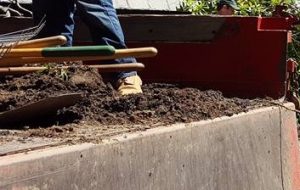Updated New York State Composting Facility Regulations
In a previous Walden blog we provided a brief overview of Subpart 361-3, which covers several different types of organics processing facilities, including: composting, anaerobic digestion, fermentation, and animal feed processing facilities. This blog will discuss permit requirements for composting facilities in greater detail, giving the reader a better idea of what to expect if your facility must be permitted.
There are three (3) categories that a composting facility (facility) may fall under, and this dictates the specific steps that shall be taken to bring the facility into compliance. They are:
Exempt Facilities
These facilities include those that accept no more than an average of 1,000 pounds or 1 cubic yard, whichever is greater, of source-separated organics (SSO) per week on a monthly basis, and facilities that receive no more than 3,000 cubic yards of yard trimmings per year. These are the least involved to bring in compliance.
Registered Facilities
These facilities include those that accept no greater than 2,500 wet tons or 5,000 cubic yards of SSO per year without exceeding 800 cubic yards in a given month. Also included are facilities that receive greater than 3,000 cubic yards of yard trimmings but no more than 10,000 cubic yards over a year.
Permitted Facilities
If the facility does not meet the criteria of an exempt nor registered facility a permit must be obtained in order to operate. This is, by far, the most involved of any of the compliance requirements. In order to operate a permitted facility, one must prepare (or perform) the following:
-
Design and operation plan
- This plan shall contain information on waste storage facilities, pre- and postprocessing methods, storage and disposal of recyclables (if applicable), a process flow diagram, and several other descriptions of means and methods.
-
Compost maturity plan
- This shall describe methodology for determining product maturity, the expected use for finished compost and a disposal plan for unsuitable finished product, and a method of removing compost from the facility.
-
Odor control and response plan
- Simply put, a plan for monitoring odors and abating, when necessary, shall be prepared.
-
Analyze the bulking agent used for the parameters described in Subpart 361-3.9
-
A description of the source, quantity, and quality of all waste to be composted, including information on seasonal variations in the waste stream
-
A description of how municipal solid waste is handled
- The application shall describe means and methods for removing recyclables and other unsuitable wastes from the influent waste stream prior to composting.
Biosolids And Yard Waste Trimmings
There are additional requirements for permitted facilities that process biosolids and/or yard waste trimmings.
Solid Waste Engineers
Walden and its team of experienced professional engineers are here to answer any questions regarding the recently adopted New York State Solid Waste Regulations. Please give us a call at (516) 624-7200 to learn how we can help facilitate the permitting process for your prospective facility.

